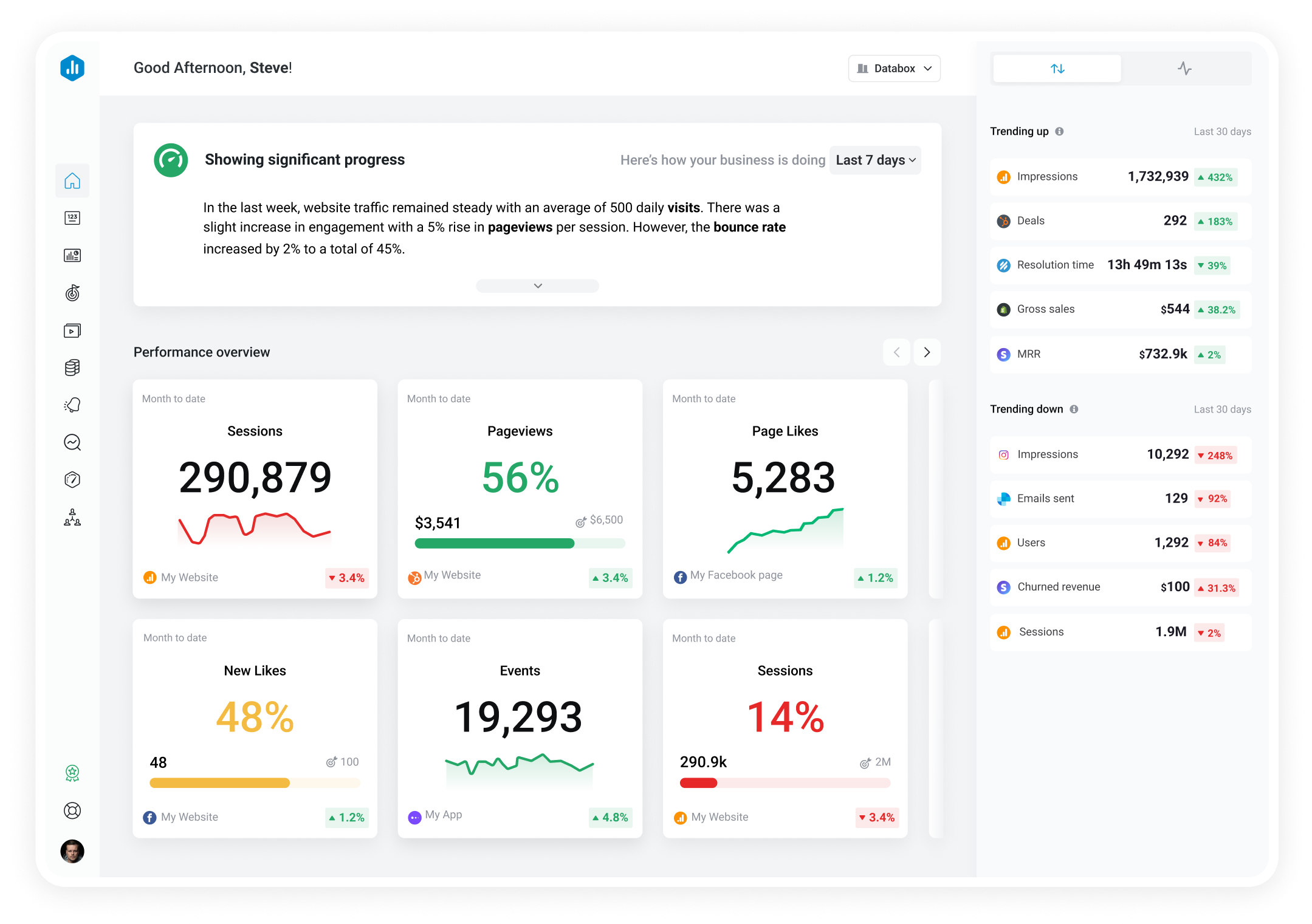Track all of your key business metrics from one screen
GET STARTED
 Help Scout Mailbox
Response Time (Office Hours)
Help Scout Mailbox
Response Time (Office Hours) Response Time (Office Hours) metric measures the average time it takes for a Help Scout user to respond to a customer during office hours.
With Databox you can track all your metrics from various data sources in one place.

Used to show a simple Metric or to draw attention to one key number.
Databox is a business analytics software that allows you to track and visualize your most important metrics from any data source in one centralized platform.
To track Response Time (Office Hours) using Databox, follow these steps:
 Goals
Goals Scorecards
Scorecards Metric Digest
Metric Digest Metric Builder
Metric Builder Data Calculations
Data Calculations Performance Screen
Performance Screen